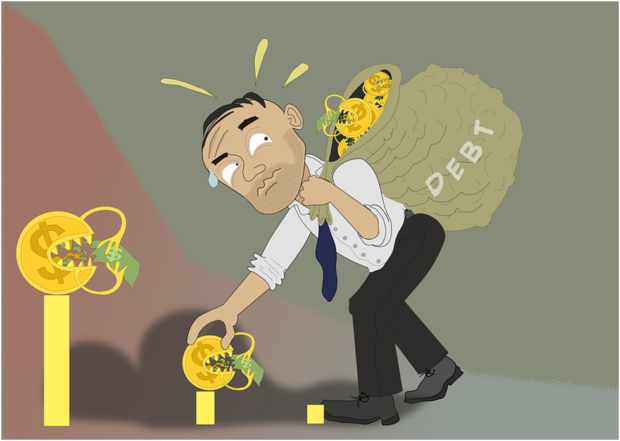Getting Out of Debt When You’re Living Paycheck to Paycheck

There’s a trend in personal finance for people to share exactly what they did to get out of debt — something along the lines of “Here’s How I Got Rid of [Amount] of Debt in Just [Time Period]!” While these types of articles and videos can definitely pass on helpful suggestions for tackling debt, they may actually have an alienating effect on some people.
That is, it’s easy to read those articles and feel discouraged because it seems like the people involved often have some advantages, like a salary high above the national average or even a leg-up from family members in the form of a down payment or interest-free loan.
What about getting out of debt when you’re living paycheck to paycheck?
Many Americans are wondering how to go about eliminating their debt when they’re barely breaking even. Although challenging, it is possible to chip away at debts even when there’s little income left over after paying for essentials. Keep reading to learn more.
Create a Zero-Based Budget
The first step in stretching every cent is making sure your budget is airtight. Many experts recommend trying a zero-based budget because it gives every penny of your income a specific purpose. A successful zero-based budget means your income and your expenditures will equal exactly zero at the end of the month.
Essentially, zero-based budgeting forces you to categorize all your expenses and closely monitor your spending. In order to free up money to devote toward your debt repayment category, you’ll have to figure out where else in your budget you can cut back. Using an app to track your spending is a good way to hold yourself accountable throughout the month.
Budgeting should help you identify areas in which you can reduce spending, even if it’s by just a few dollars per month. Then you can channel these “savings” toward debt repayment.
Here are a few small ways you may be able to save more money:
- Switch to cash instead of credit for a period of time so you can avoid the temptation to put purchases on plastic.
- Wait at least 24 hours before making a purchase. During that time, think about the pros and cons of going ahead with the transaction.
- Apply a browser extension like Honey or search for online coupon codes on a site like RetailMeNot before checking out.
- Evaluate your current subscriptions and cut anything you can live without.
It may seem like slow going at first but overhauling your budget and spending will free up extra dollars each month, which can go directly toward your most urgent debts.
Follow a Debt Elimination Strategy
When you’re trying to figure out how to get out of debt on a tight budget, never underestimate the value of having a plan. Instead of trying to throw different amounts of money at different debts hoping you’re making a difference, aim to repay your balances in a systematic way.
Using the snowball method means you’ll repay your debts smallest to largest — while remembering to make minimum payments on each balance every month, of course. This strategy can give you a little psychological boost because it tends to make repayment feel more manageable and like you’re seeing results quickly.
Using the avalanche method means you’ll instead prioritize your debts based on interest rate, eliminating debts from highest percentage to lowest percentage (while making minimums on every account). The advantage of avalanching is you’ll pay less in the long run by getting rid of the steepest interest soonest.
Getting out of debt when you’re living paycheck to paycheck requires an effective budget and a plan of attack, and it is absolutely doable.

